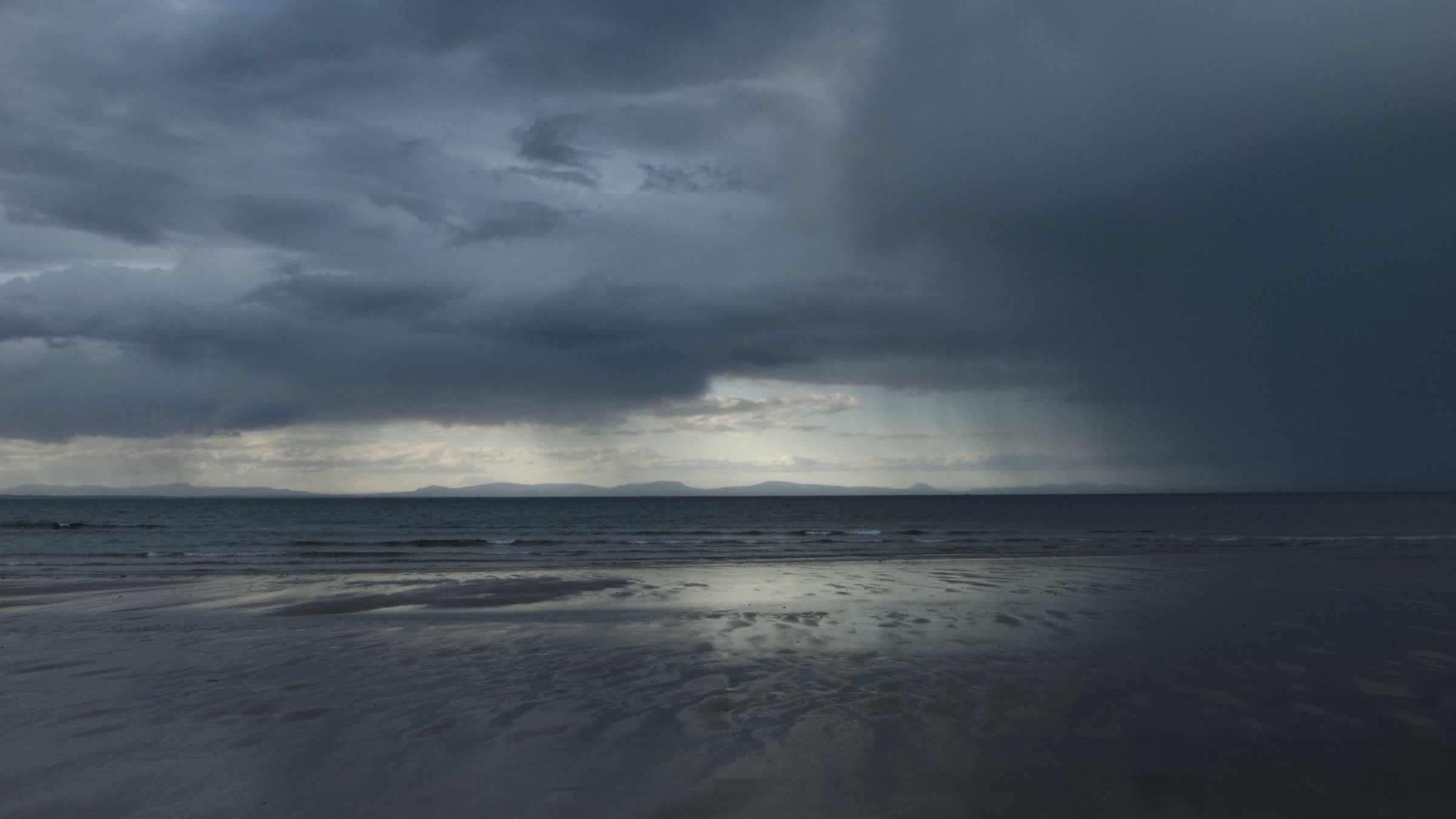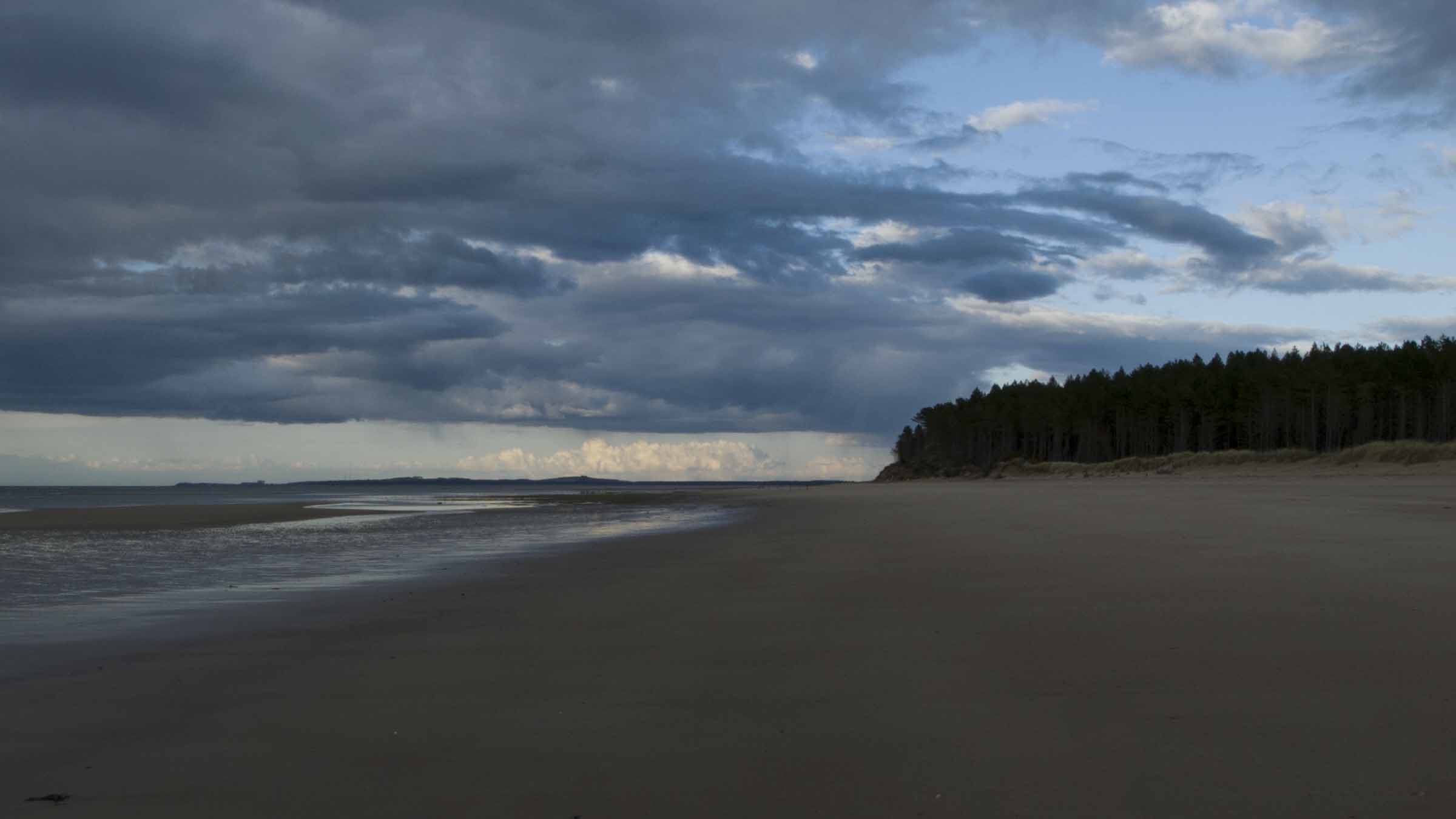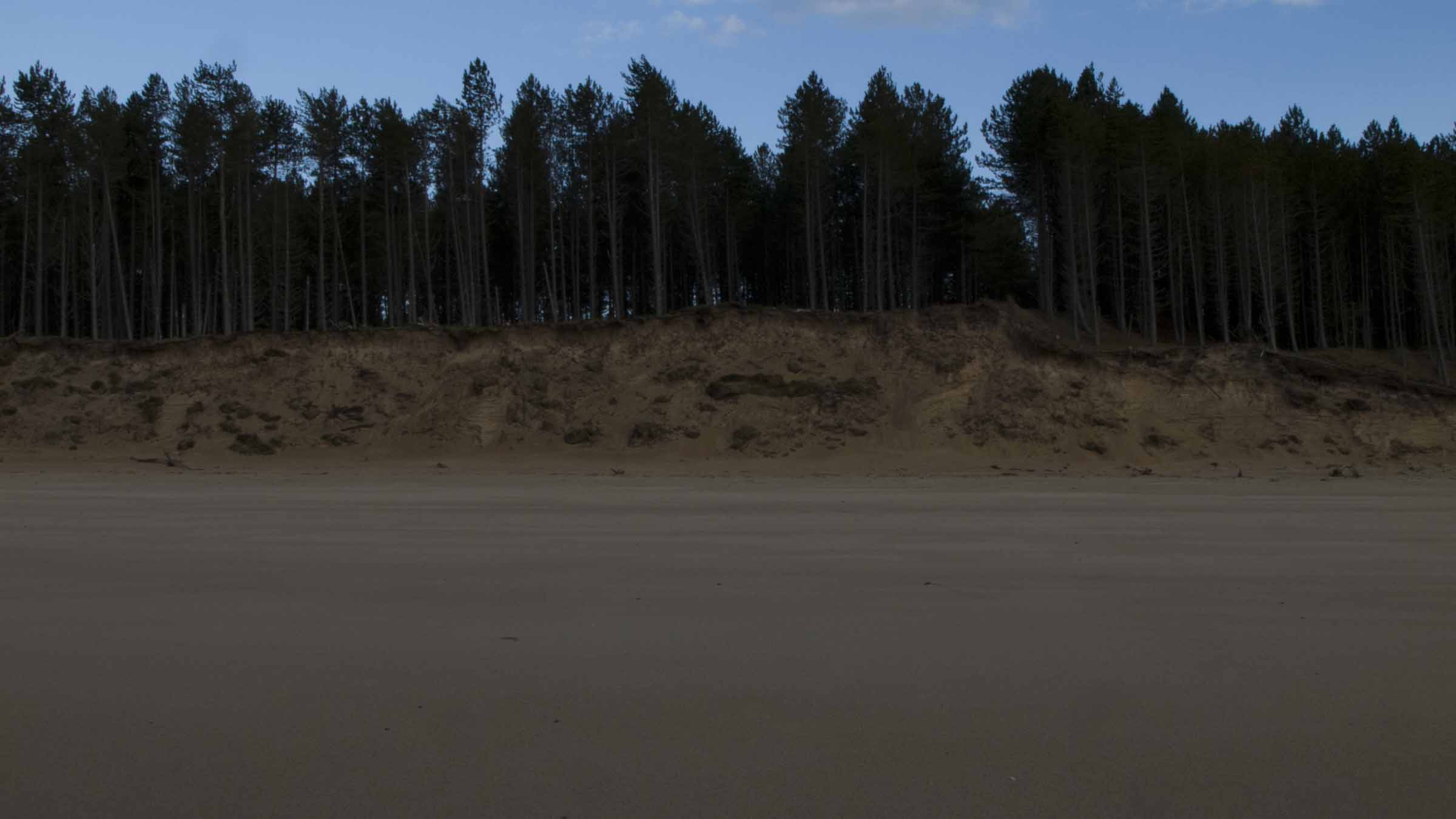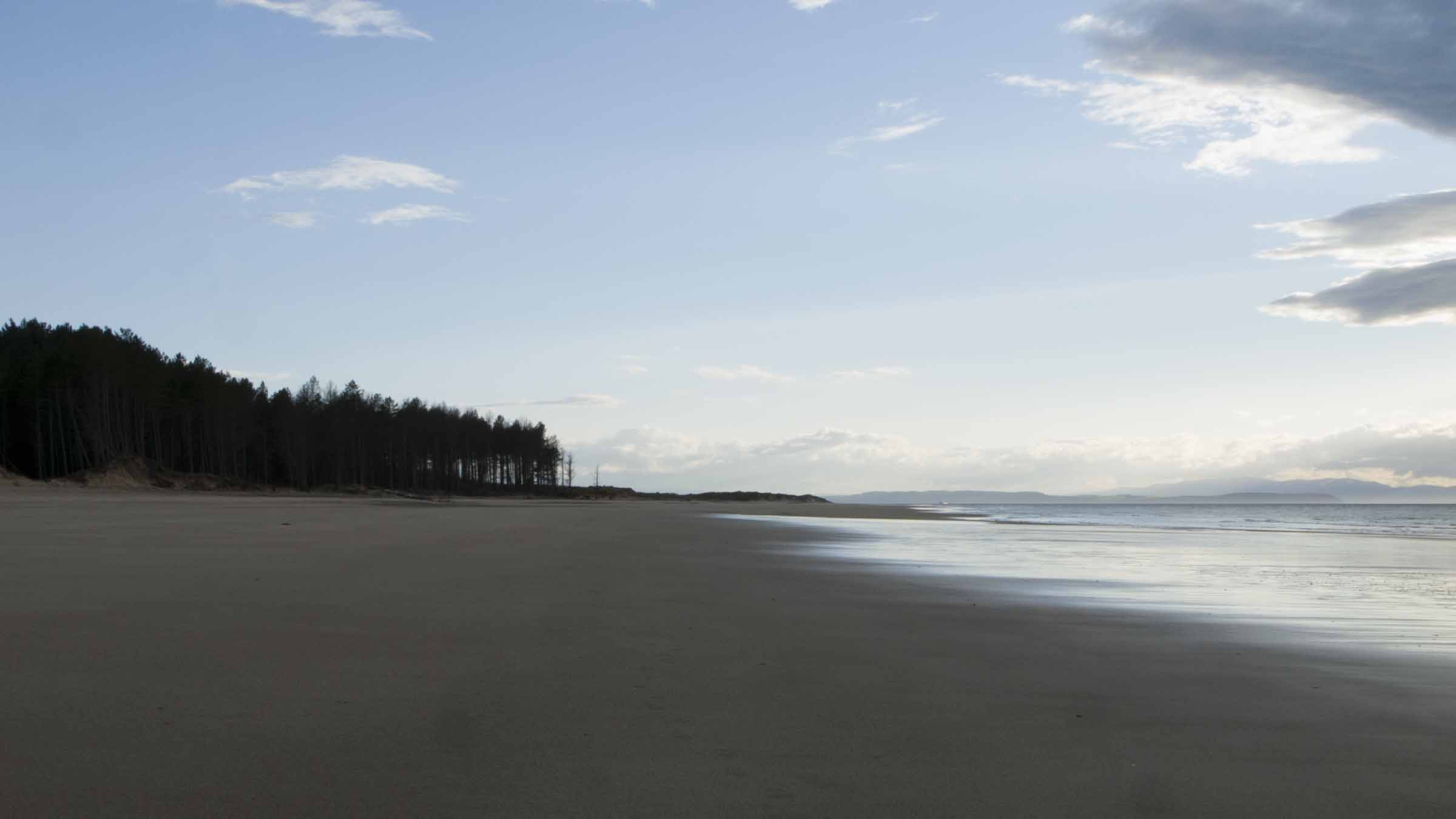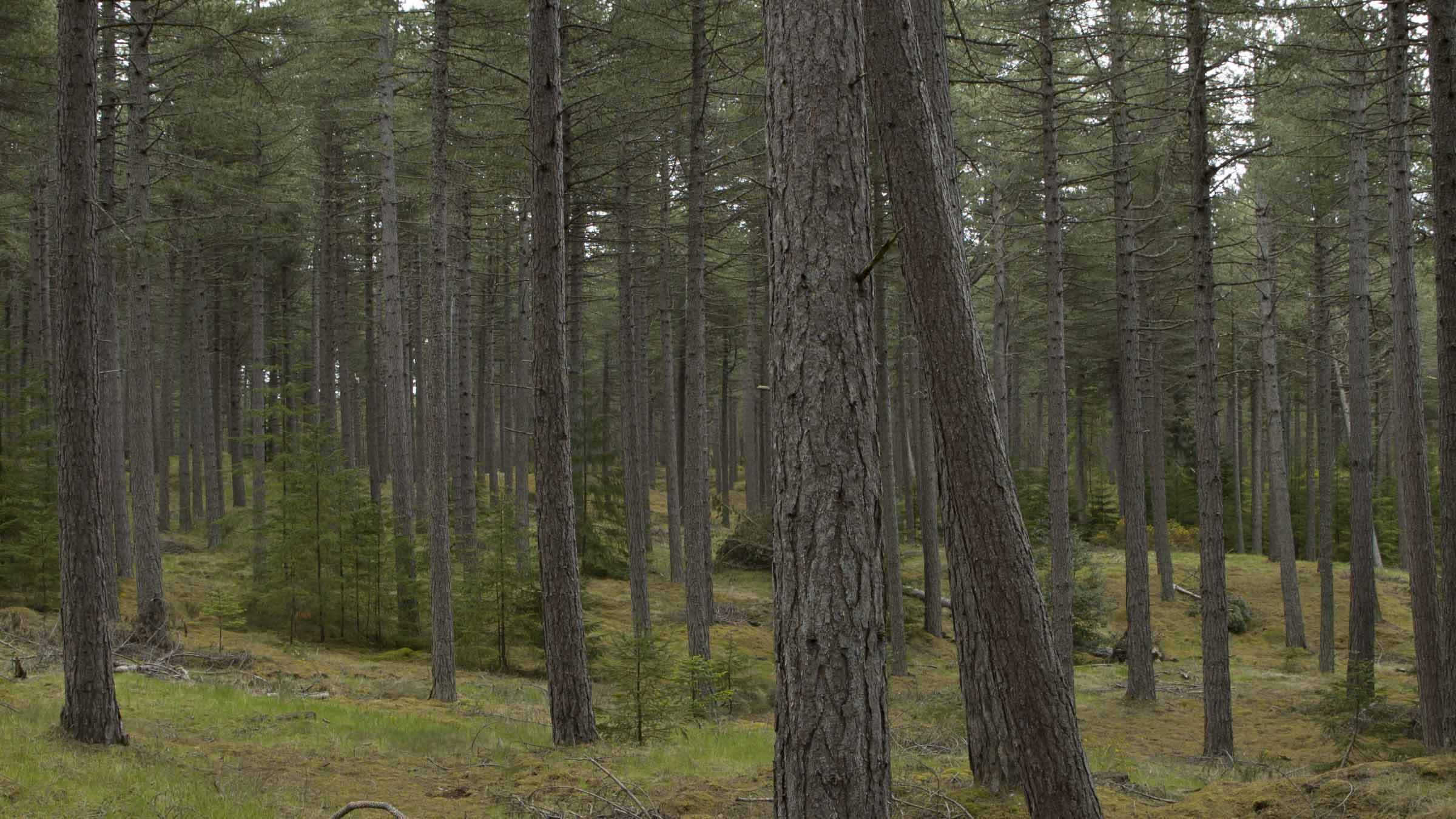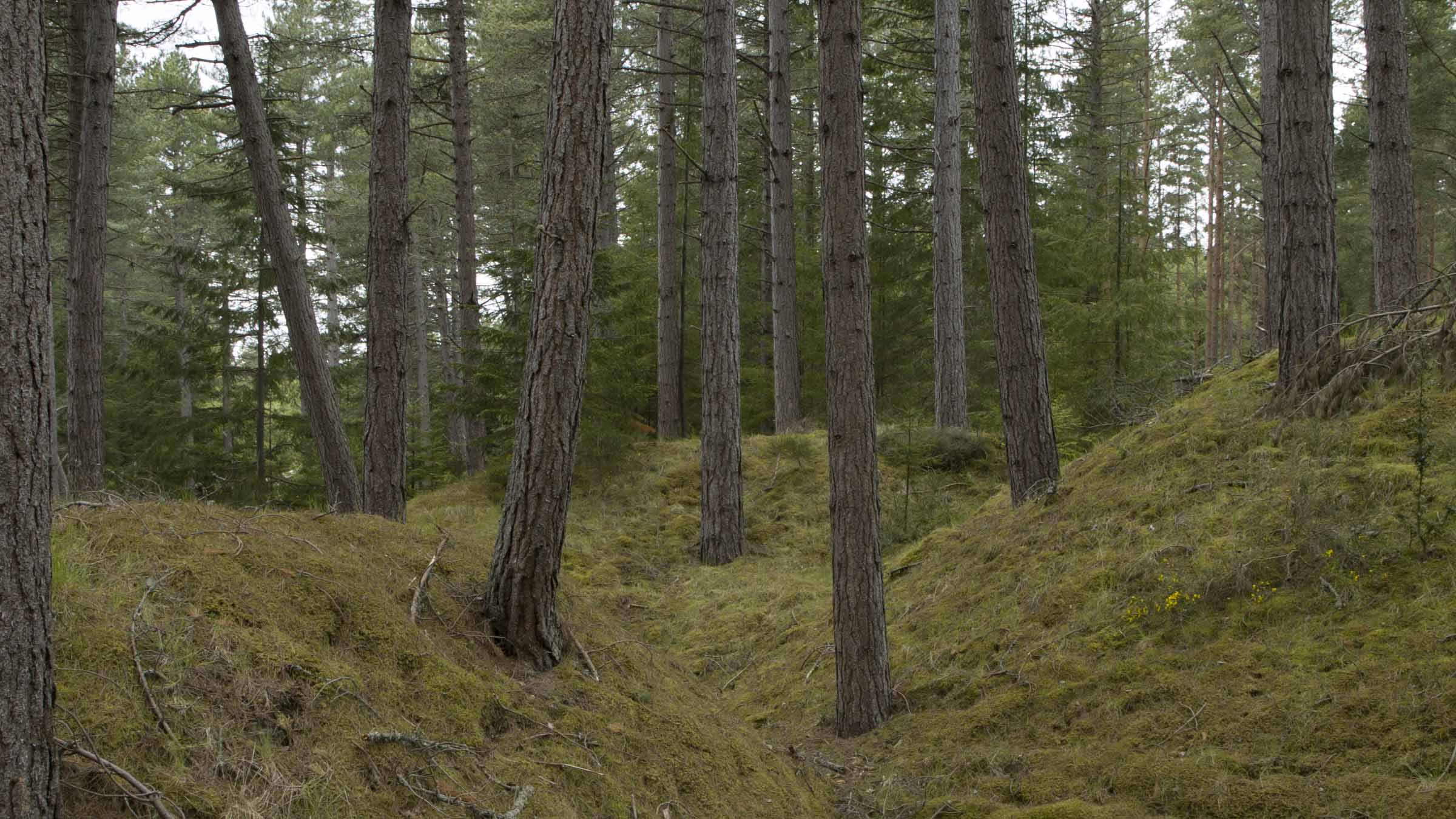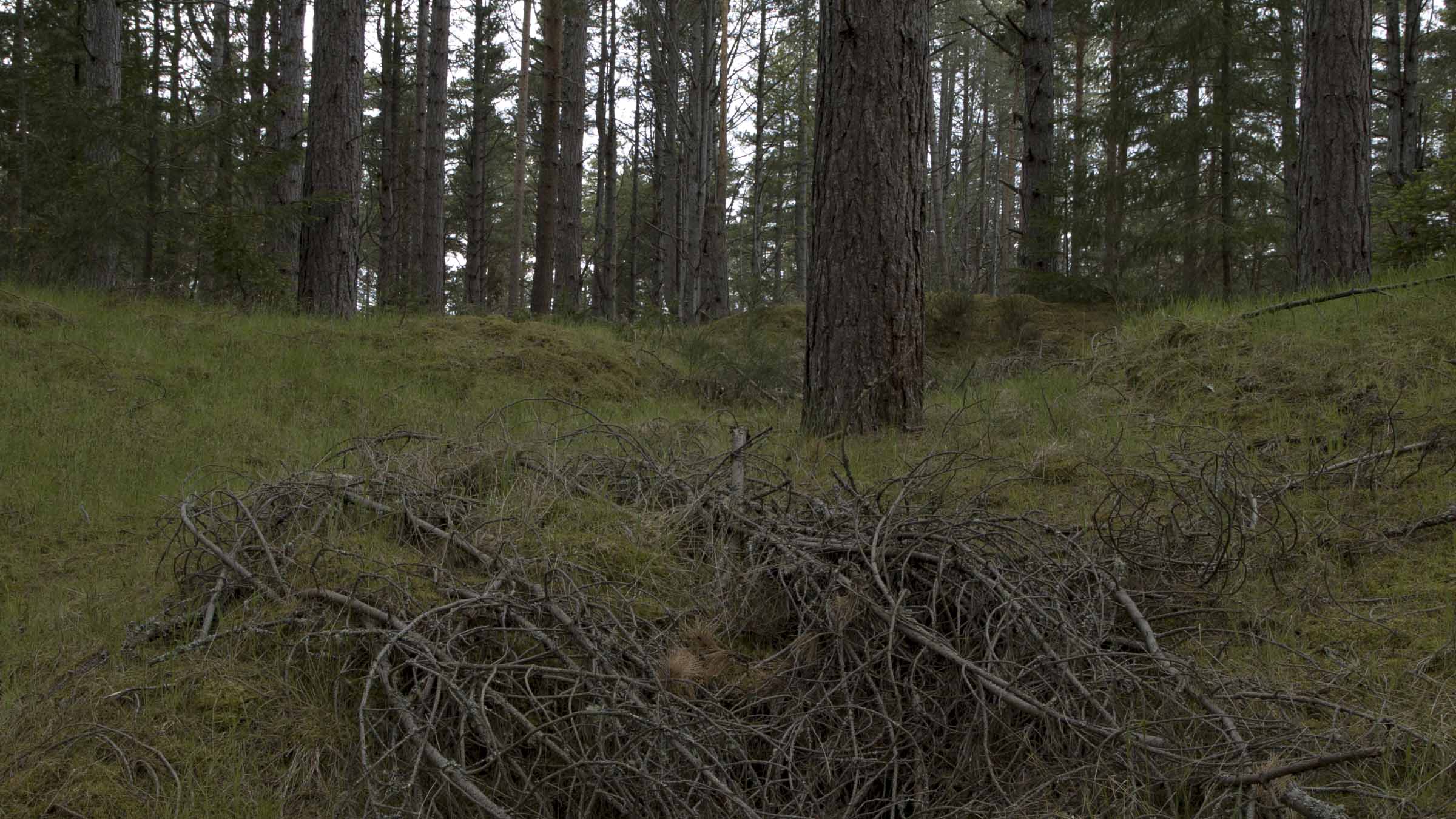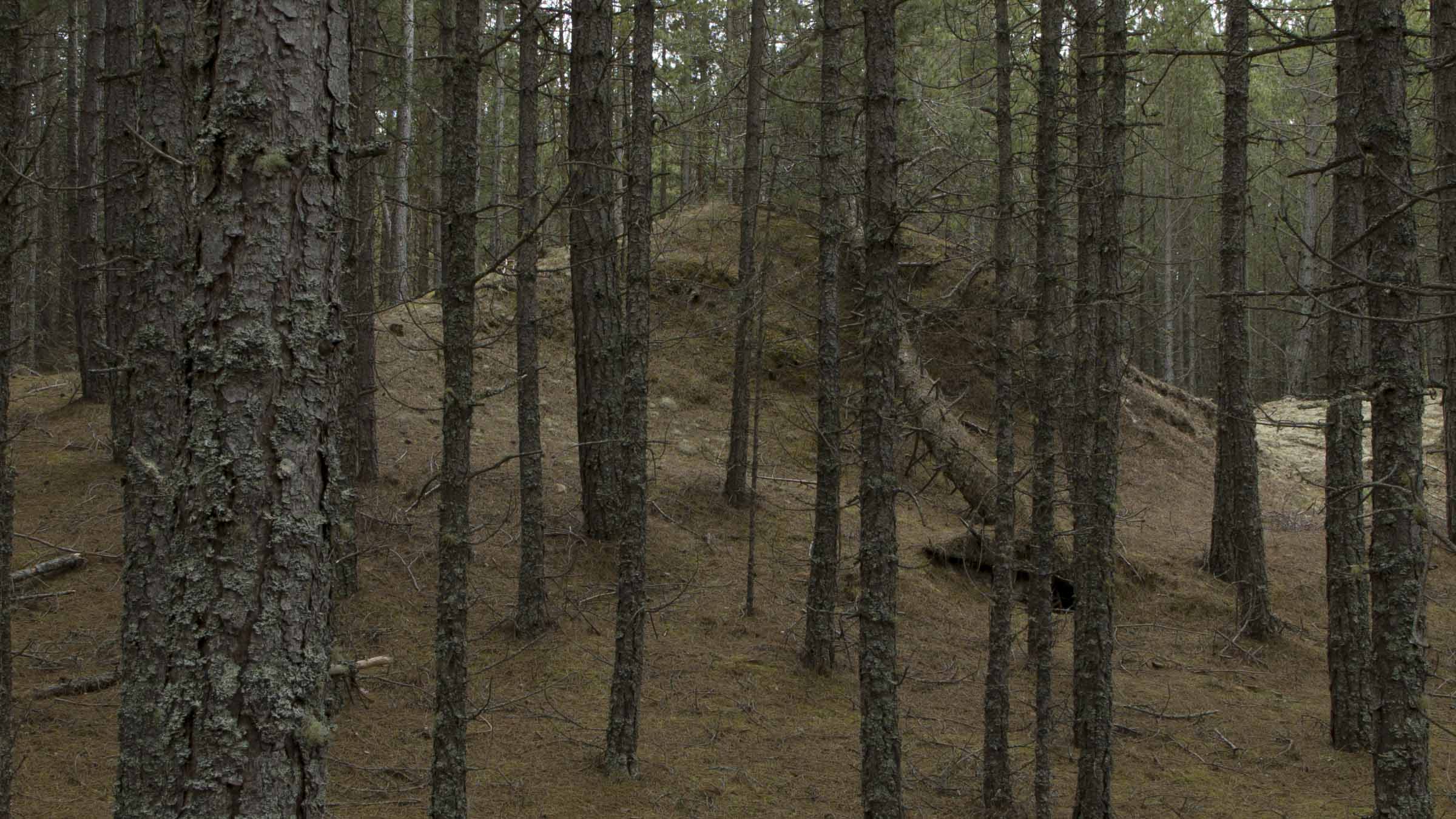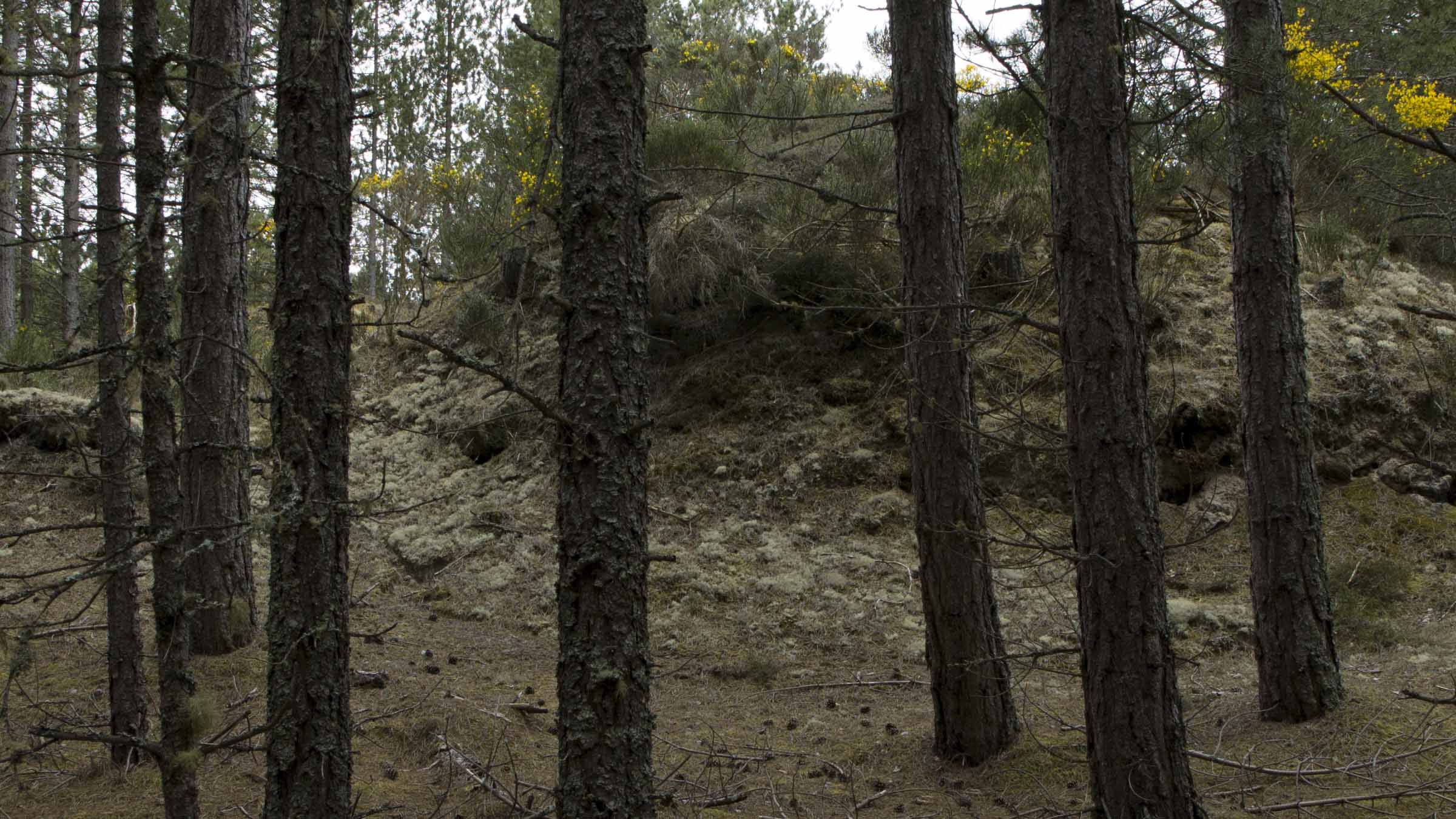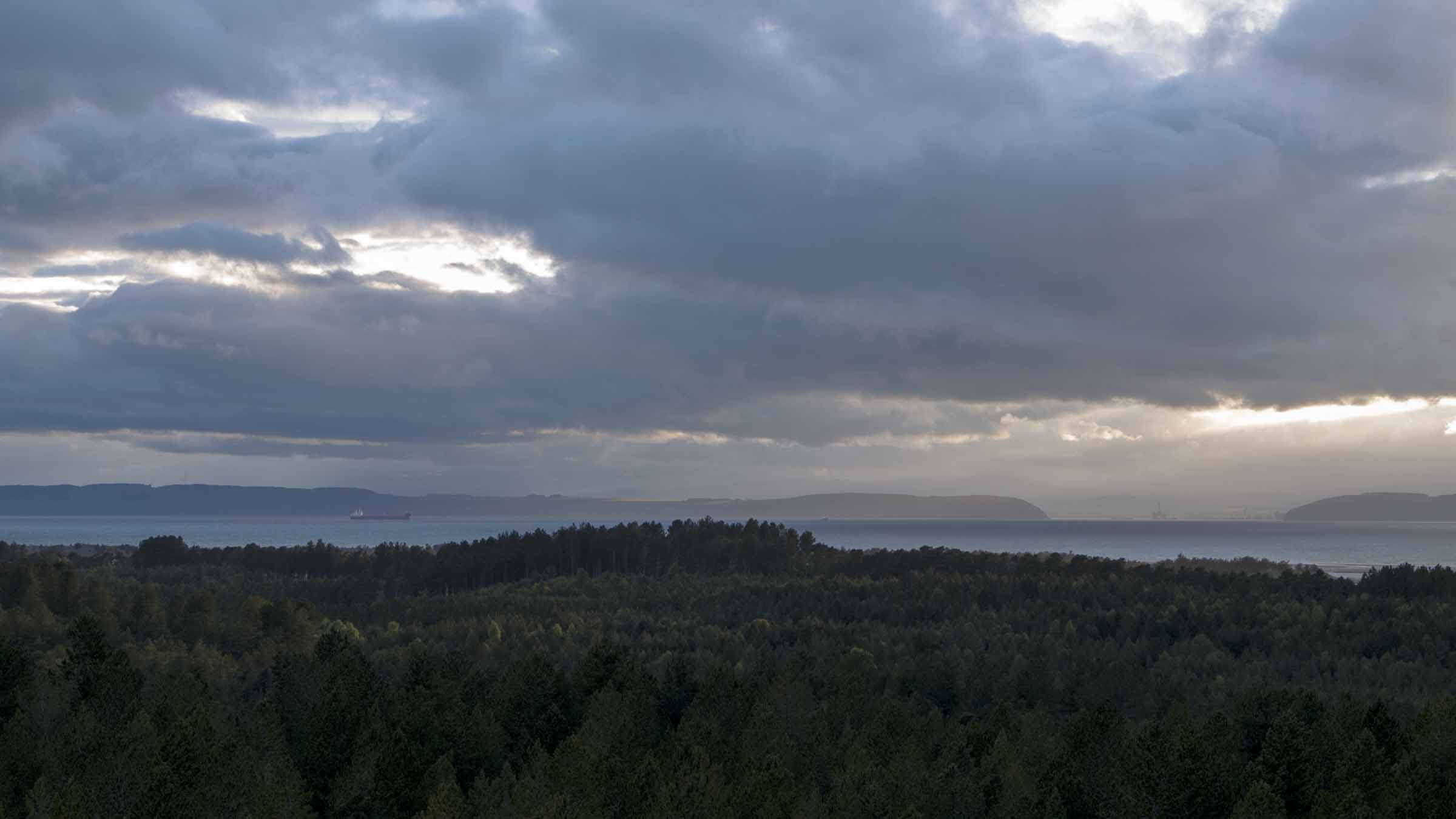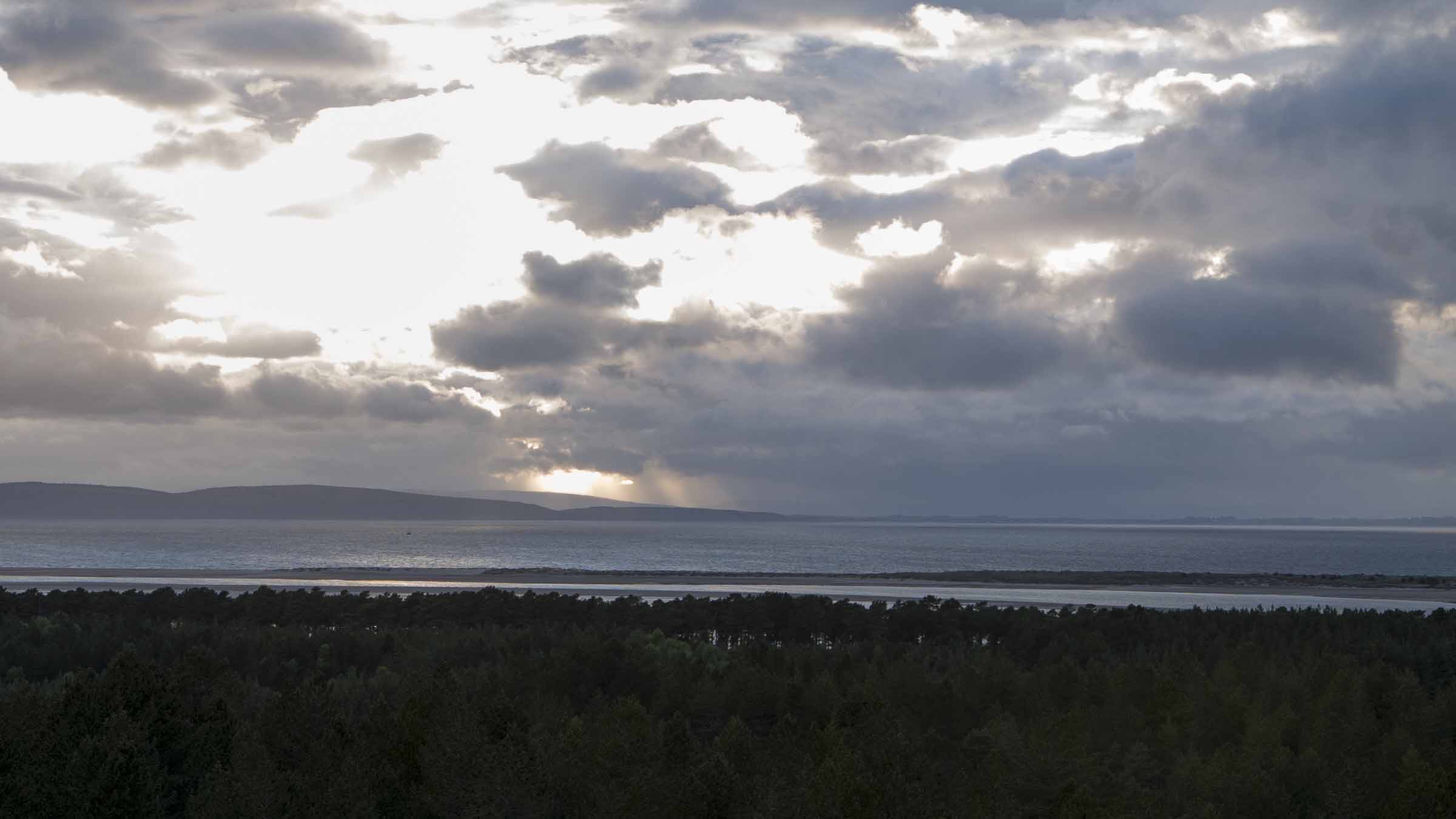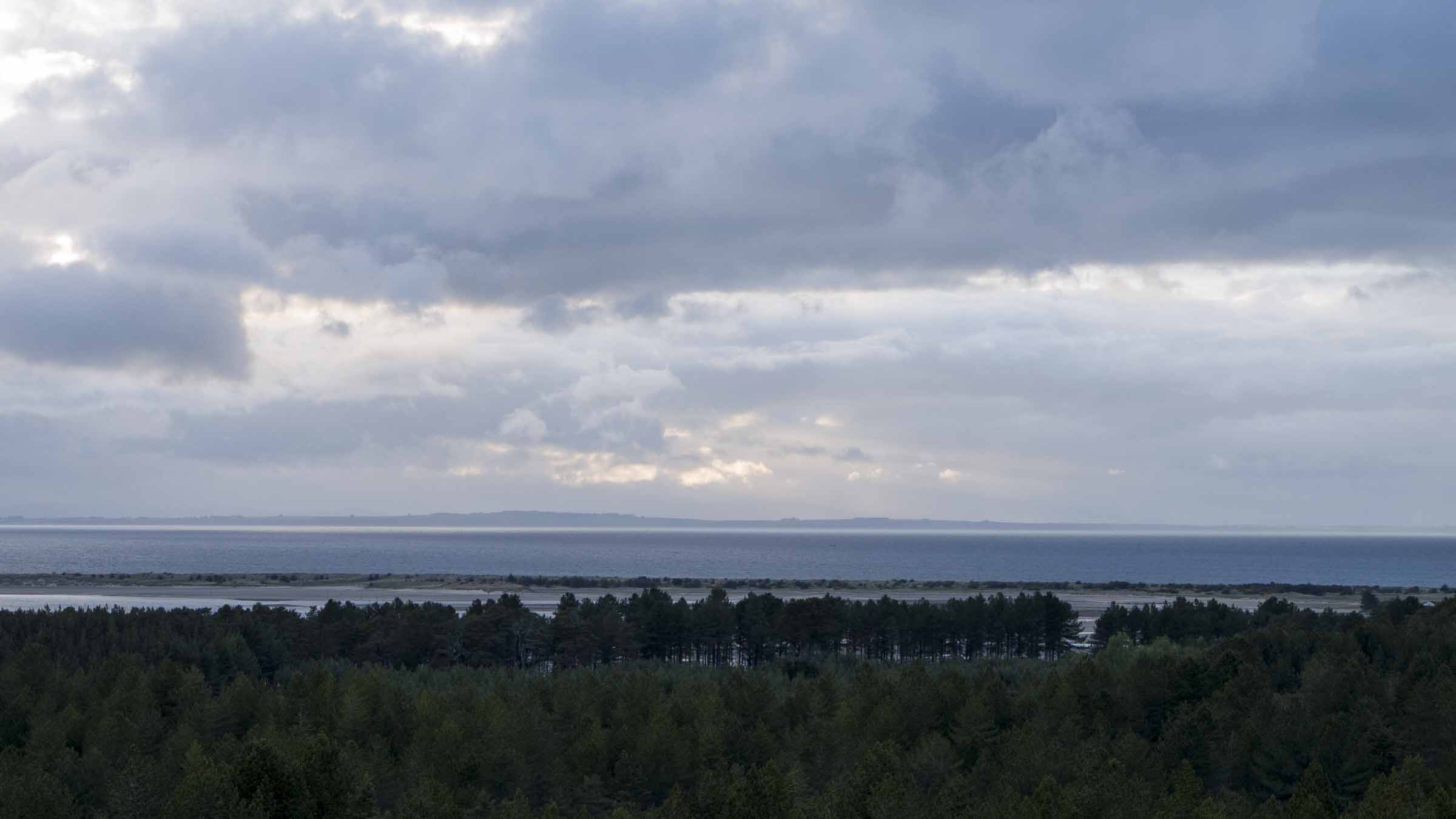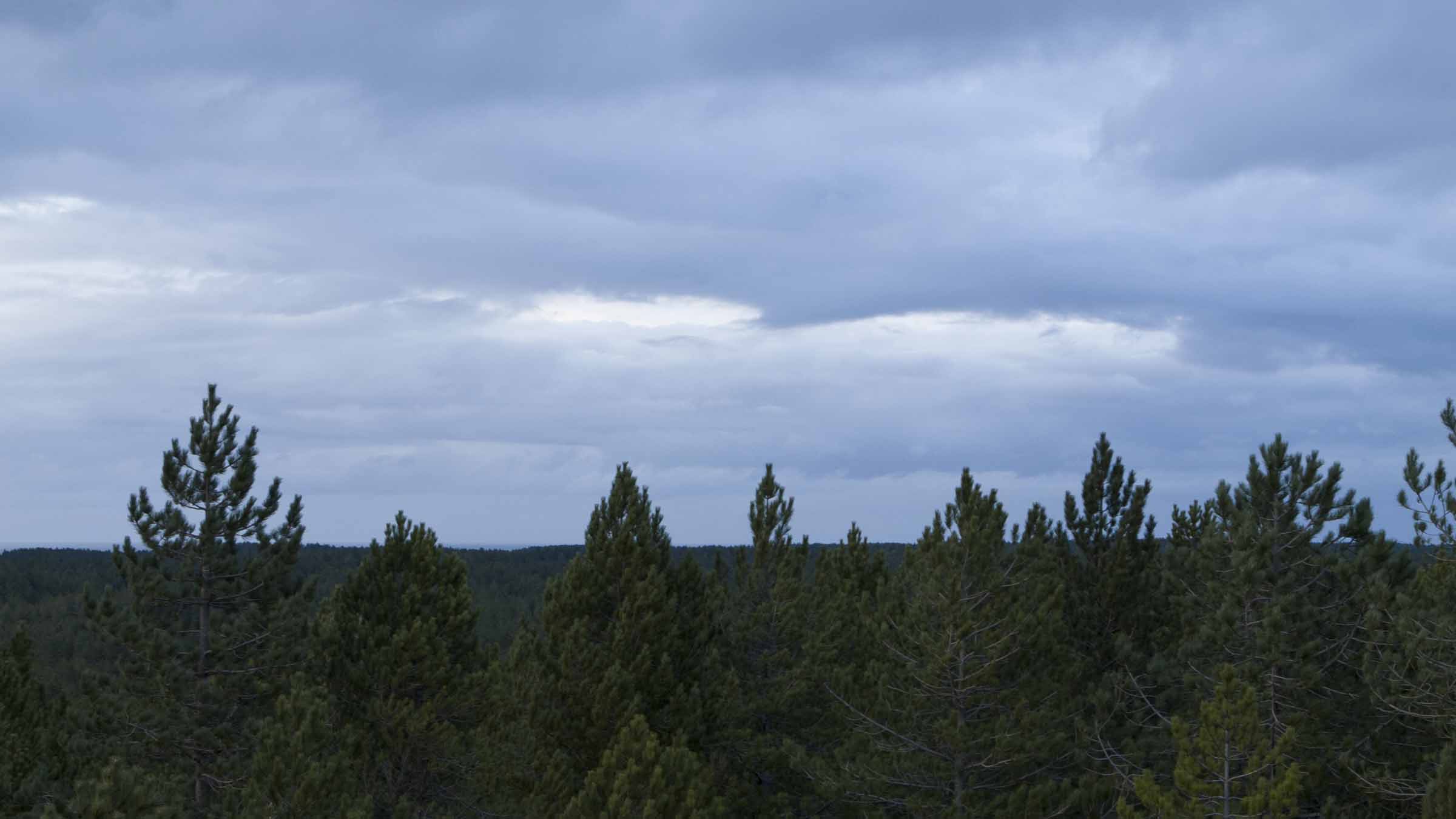| |
The Wandering Dunes, Culbin Sands, 2015
4 Channel video installation with soundscape, autoloop, each approx. 7’ to 20’
Inside the box labeled Rothiemurchus, two photographs appeared of Culbin Sands, a dune system that sits on the Moray Firth between
Nairn and Findhorn in Scotland. Up until the end of 17th century it was the site of a prosperous farming estate. Coastal sand dunes were gradually
destabilized
as local people removed plant cover, including marram grass, which was used to thatch their homes. This once fertile area was gradually
covered
with sand and in 1694 a great sandstorm finally buried the estate, turning the area into desert. In the early 20th century the dunes were
re-stabilized
by the Forestry Commission and from the 1930s onwards Culbin Forest was planted. At over 9000 acres the forest mixes native Scots Pine
(Pinus
silvestris) with more experimental planting of species including Corsican Pine (Pinus nigra) and Norway Spruce (Picea abies). Between the forest and
sea is an area of saltmarsh, winter home to thousands of birds. Here the landscape is constantly changing and being shaped by coastal processes.
In order to research the forest and fully understand its landscape I met Allen Campbell, Environment Ranger at the Forestry Commission, who
explained the planting strategies and complex political decisions that have been made over the years. Allen gave me access to planting maps that I
used to position the camera at strategic angles. Attempting to understand how humans have endeavoured to control the landscape proved tortuous
as the sea gradually yet constantly reclaims the coastline. Lesley Hutcheson from the Forestry Commission Scotland showed me a collection of
photographic albums from 1909 through to the 1970s taken by various foresters and rangers that gave a detailed account of the plantation
strategies, as Salisbury’s images did not contain sufficient annotations in order for me to locate the places he photographed.
Filmed from the top of a viewing platform, from the beach looking at the eroding dunes and from within the Culbin Forest the camera was placed
strategically in the four locations, panning the landscape resulting in a 360° rotation that directs the viewer’s gaze through each location in and out
of the forest. The soundscape accompanying the films is composed from natural elements and the interview with Allen Campbell, Environment
Ranger at Culbin, explains the history of the lost village covered by the dunes, the afforestation and reclamation of the landscape by nature. |
|
